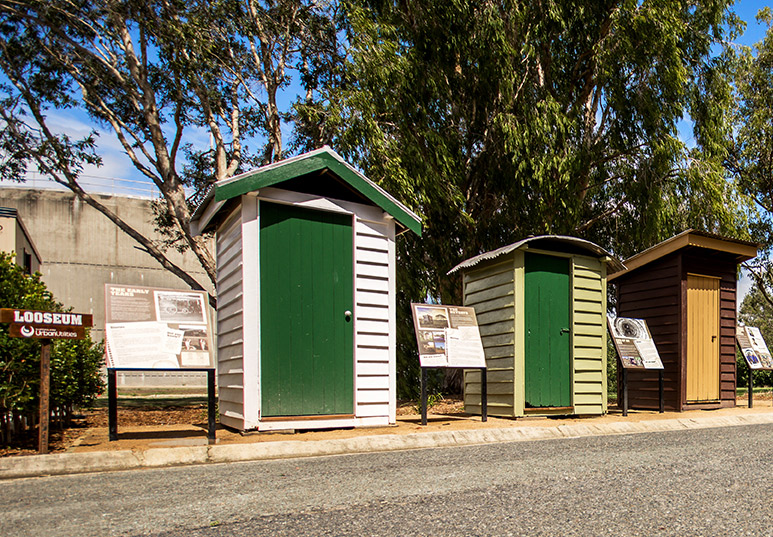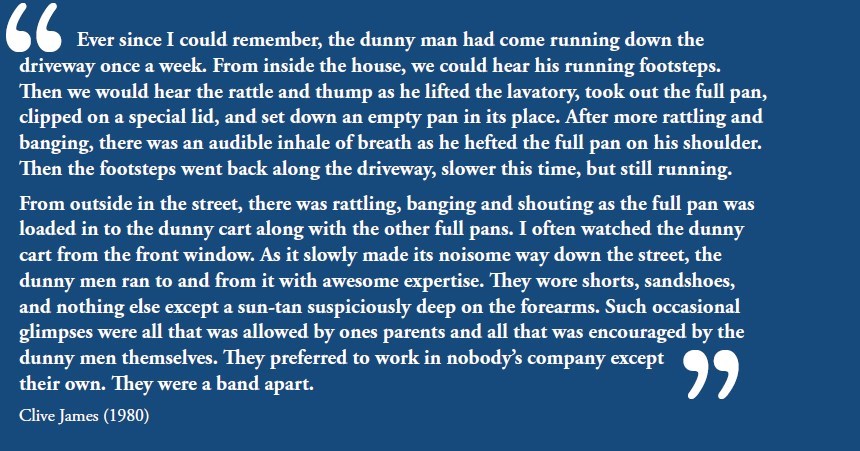Flasback Fridays: Sewerage

Across the State, disposal of sewage did not progress rapidly from the cesspits and night soil collections of the 19th Century. By the 1920s in Brisbane, only the wealthy had septic systems and backyard dunnies were still the norm. In 1927 a riverside sanitary depot was established near the Victoria Baths, adjacent to the Victoria Bridge, from where sanitary barges carried loads of night-soil downstream to dump into Moreton Bay.
In the 1920s work finally began on a Brisbane sewerage system but it had limited reach and was severely strained. A serious pollution scare occurred in 1934, when an outbreak of typhoid was linked to oysters gathered only a mile from the main sewerage outfall at Luggage Point. These problems continued right through the 1950s.
By 1940 only 40% of Brisbane was sewered and this proportion did not increase markedly over the next twenty years. Internationally, the sewering of Paris commenced in 1850 and in London in 1859 and though only slow progress was made, the largest centres in western Europe were mostly sewered by the end of the 1870s and most large regional centres in England by 1887. Queensland was slow to adopt sewerage even compared to Sydney and Melbourne and was criticised nationally for this tardiness.
However, it should be remembered that even in the largest cities, outer suburbs were not sewered until the later 1940s, as recalled by Clive James (see box).

Rapid increase in Brisbane’s sewerage services did not occur until the 1960s spurred by then Mayor Clem Jones who drew together Local, State and for the first time developer charges to drive investment in Brisbane’s infrastructure. The percentage of sewered properties increased to 60% by 1967.
In other towns around the State sewers were installed progressively from the 1920s including: Toowoomba in 1925, Mackay in 1937, Quilpie, Goondiwindi and Maryborough in 1941, Cunnamulla in 1942, Bundaberg and Warwick in 1944, and Texas in 1969.
Investment in STPs was slower and development of modern sewage treatment plants increased rapidly in the 1970s and was particularly spurred on by increasing movement for environmental protection.
Profile image: The "Looseum" at Urban Utilities' Innovation Centre at Luggage Point pay homage to the backyard dunny, a great Aussie icon.
Back to list